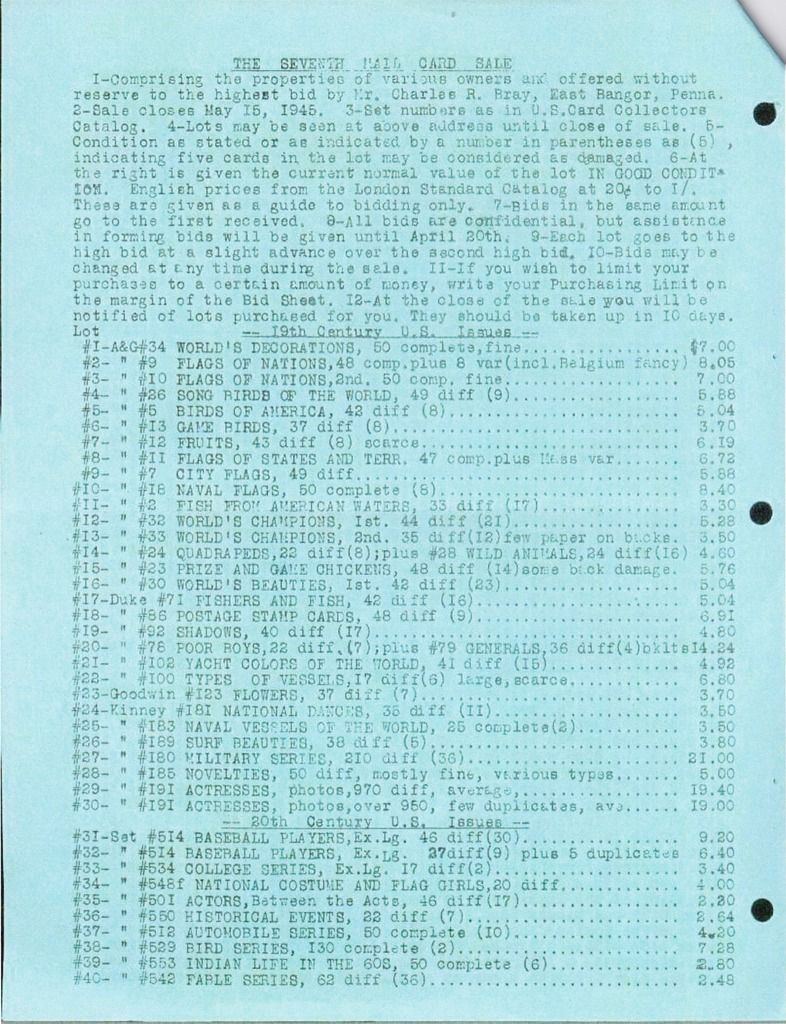A few weeks ago, I wrote a post about the first auction of tobacco cards ever held, when Jefferson Burdick sold the collection of James Colkitt in late 1943. He described and promoted the auction (which he called a "mail sale") in the pages of Card Collector's Bulletin, but only listed the lots in a separate auction catalogue, which I don't have. After the Colkitt sale ended successfully (with a single bidder winning all the lots), there was a second auction in early 1944 to sell the collection of Alfred O. Phillipp, but Burdick handed the reins for that one to Charles Bray, who would continue to run auctions in Card Collector's Bulletin for the next 40 years. The lots for that second auction were also listed in a separate auction catalog, but Burdick and Bray wrote about it quite a bit in the pages of CCB. My post about those first two card auctions is here:
http://net54baseball.com/showthread.php?t=239891
In Card Collector's Bulletin #30 (June 1, 1944), in which Burdick and Bray announced the results of the second auction, they also announced the start of a third auction with a closing date of August 12, 1944. The lots were still listed in a separate auction catalog which I don't have, but in the August 1, 1944 CCB (#31), Burdick and Bray announced some changes in the auction rules. In the first two auctions, bidders could write or call to find out the high bid on any lot, then top that bid if they wanted to. Burdick said this was to make it as if you were in the room at a live auction, but a lot of people complained, so he changed the rules to make all bids confidential. In addition, he changed it so that winning bidders only had to pay slightly more than the second-highest bid, which is now standard practice. So you could make a very high bid on a lot you really wanted, but then you had to hope that nobody else had the same idea and also made a crazy high bid. That kind of thing still happens on eBay and with auction houses, but back in 1944 you had to wait until the auction was over to find out what happened. Anyway, here are the relevant pages of CCB #31, which also include some interesting discussion by Burdick and Bray.
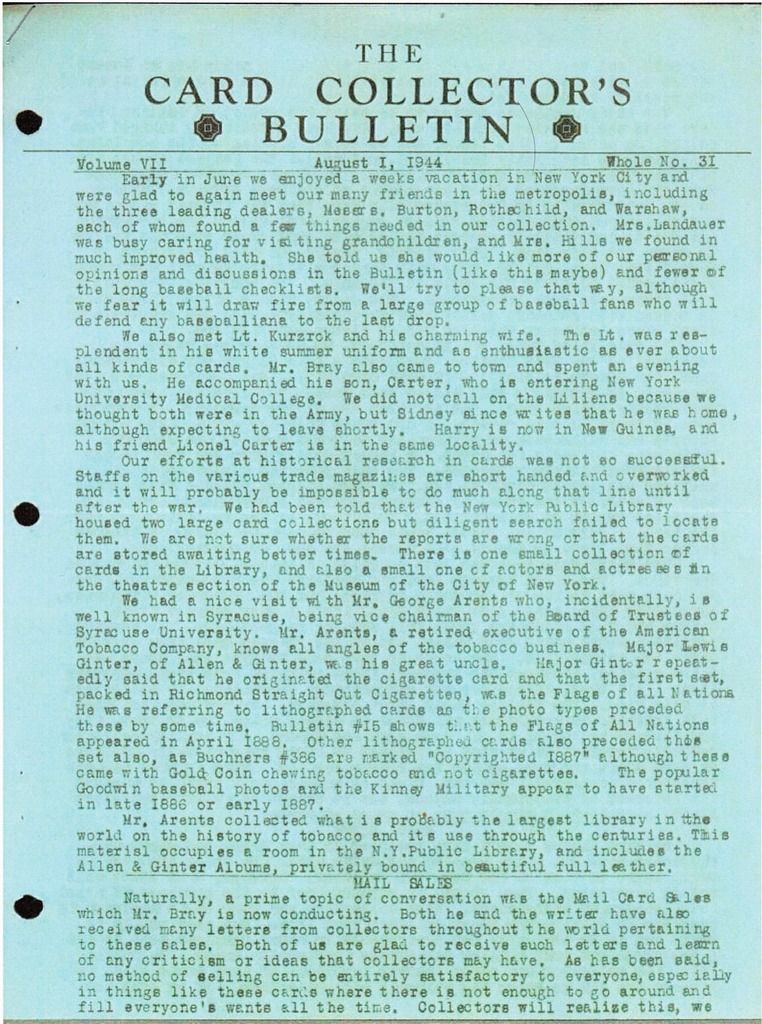
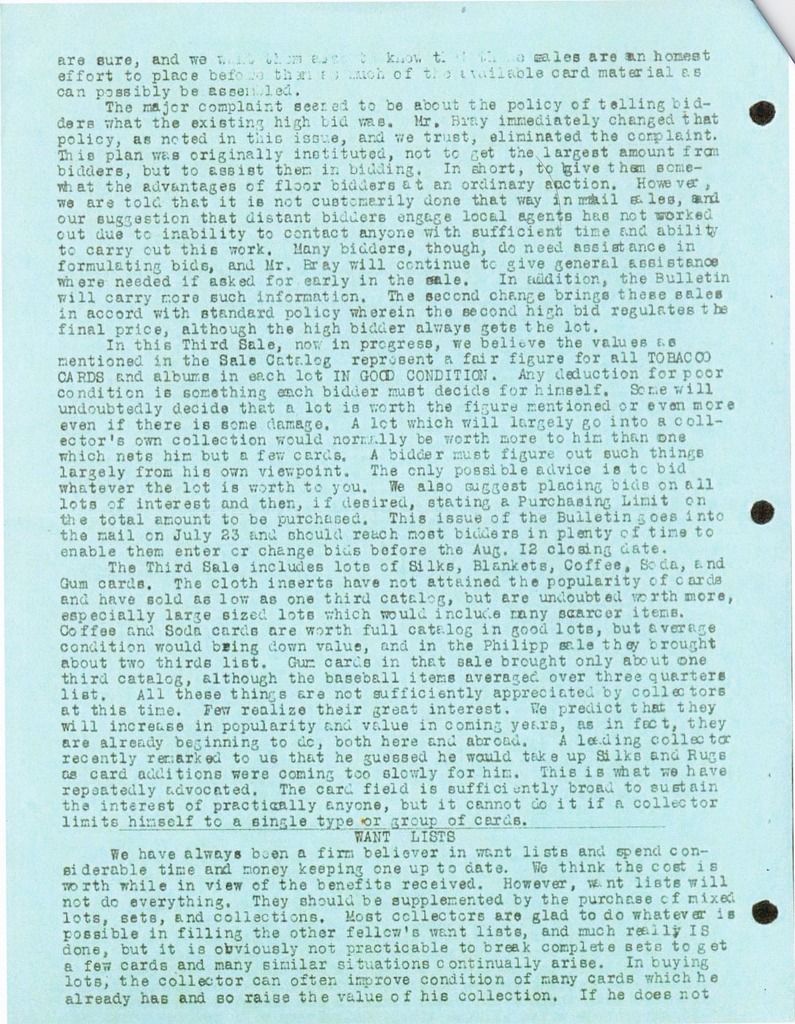
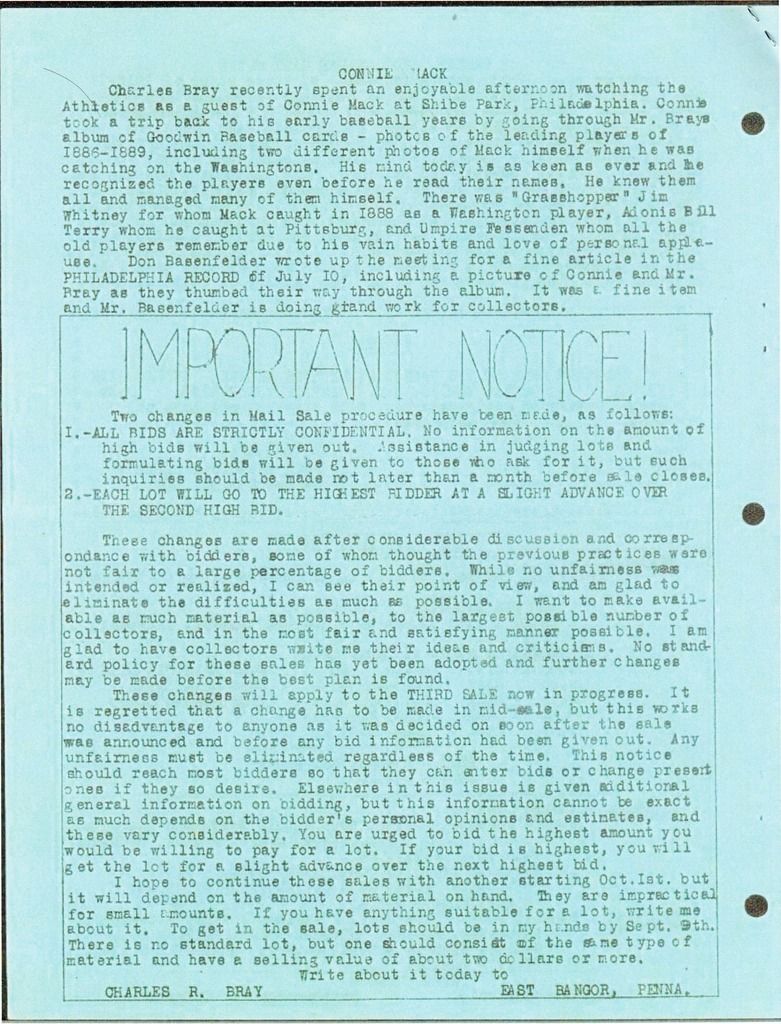
In the next issue of CCB (#32, October 1, 1944), Burdick and Bray announced a fourth card auction, but this time they listed the lots in the pages of CCB, a practice Bray would continue for the next four decades. He listed the number of cards in each lot, and in parentheses added the number of damaged cards (many of which no doubt had paper loss on the back). Alongside each lot description was an estimated value, based on the values in the 1939 United States Card Catalog -- since prices had risen quite a bit in the previous five years (as I noted in my post on the Colkitt auction), these estimates prices were four times catalog for color 19th century cards, twice catalog for 20th century tobacco cards and actress cards, and catalog values for everything else. At the end of the auction listings, Burdick wrote about the results of the third auction, including some of the prices realized.
The most interesting lot in this auction for me is #20, consisting of 900 different Old Judges, with an estimated value of $560. There were also three lots of Mayo die-cut ballplayers, which we know as N301. On the second page, there were two lots of T206s, 478 different (85 damaged) and 447 different (140 damaged); two lots of 40 different T201s (one very fine, one with 15 damaged cards); a lot of 124 different T205s (54 damaged); plus some B18 blankets and P2 pins.
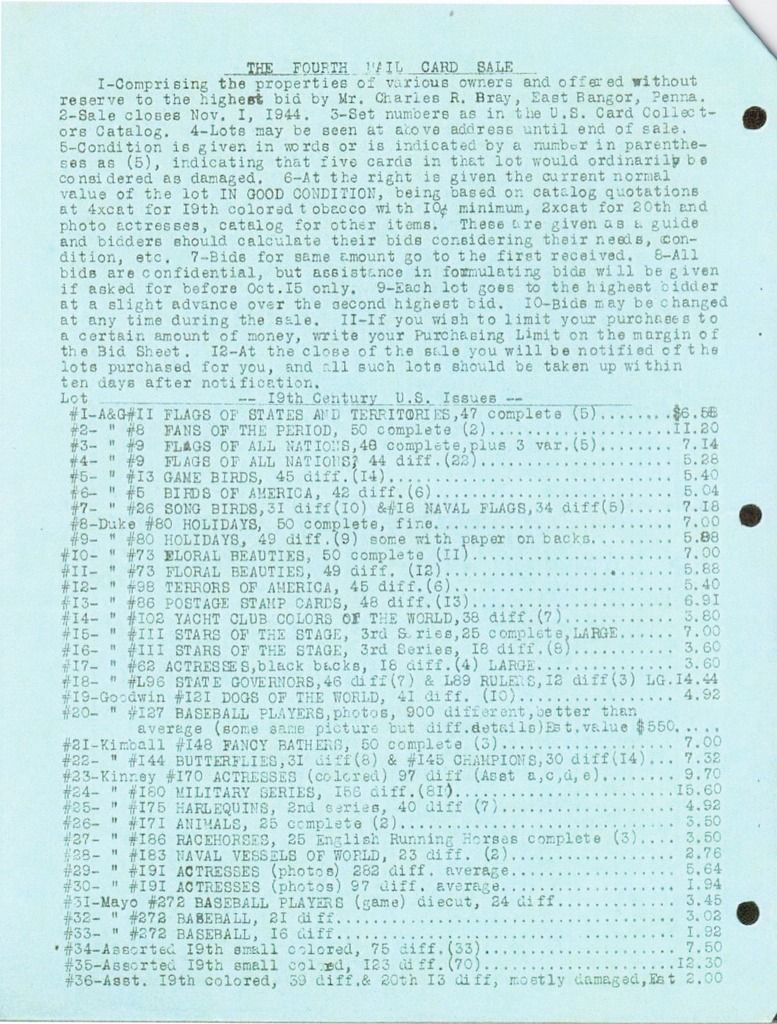
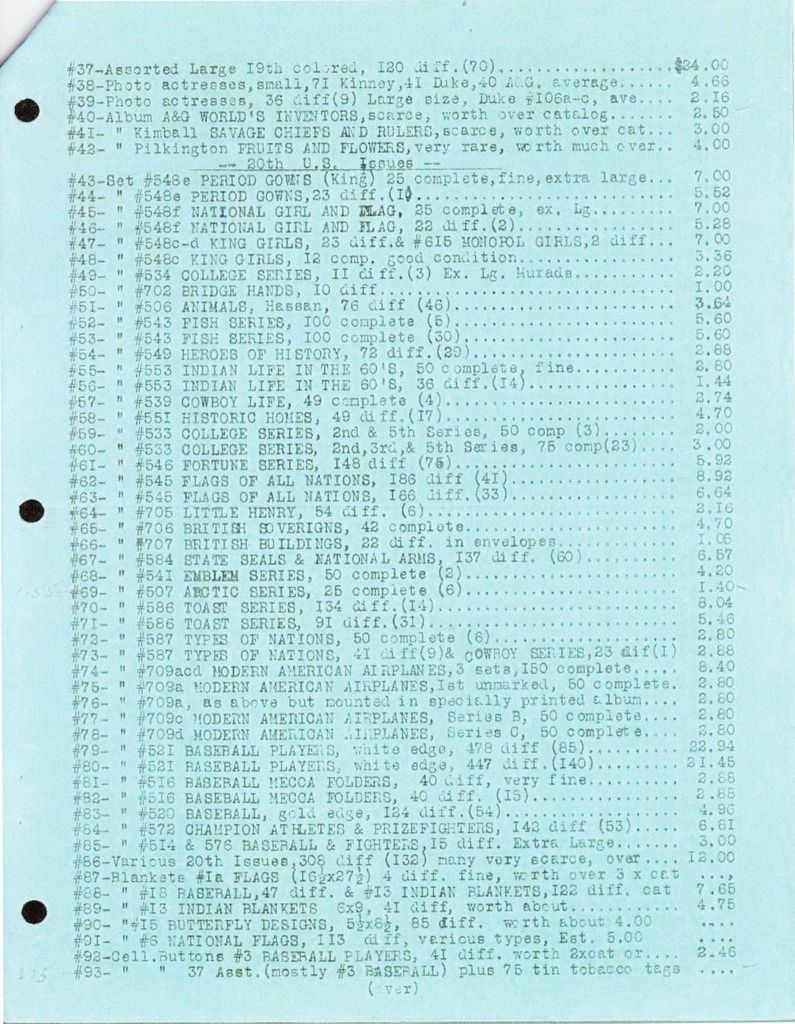
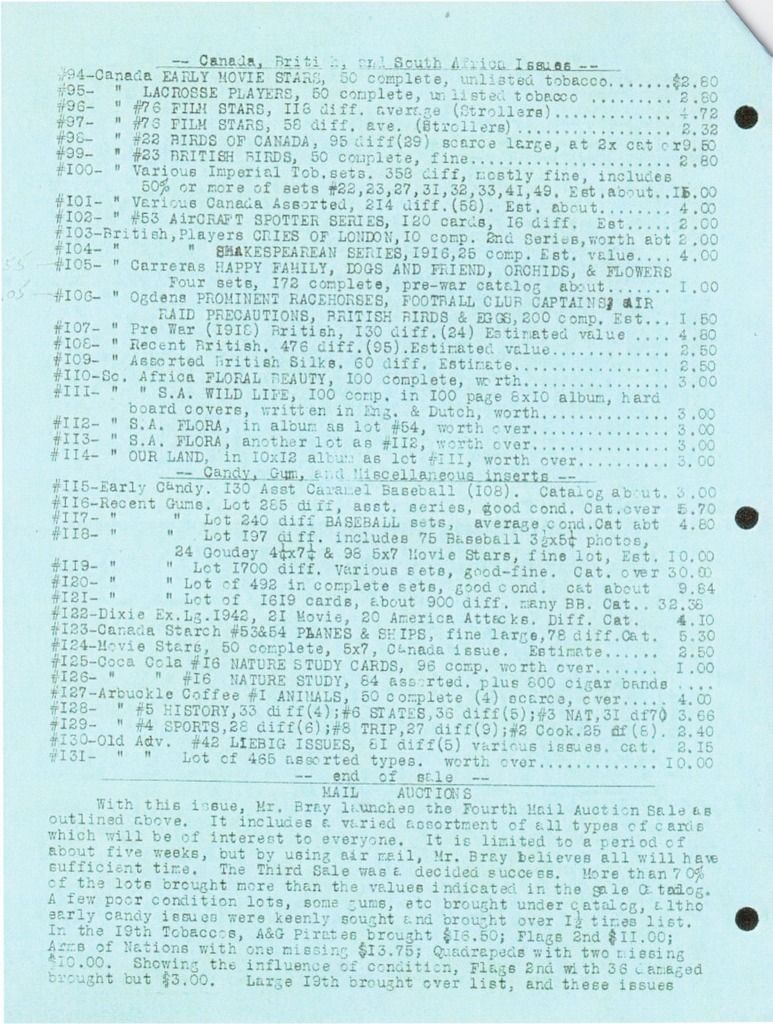
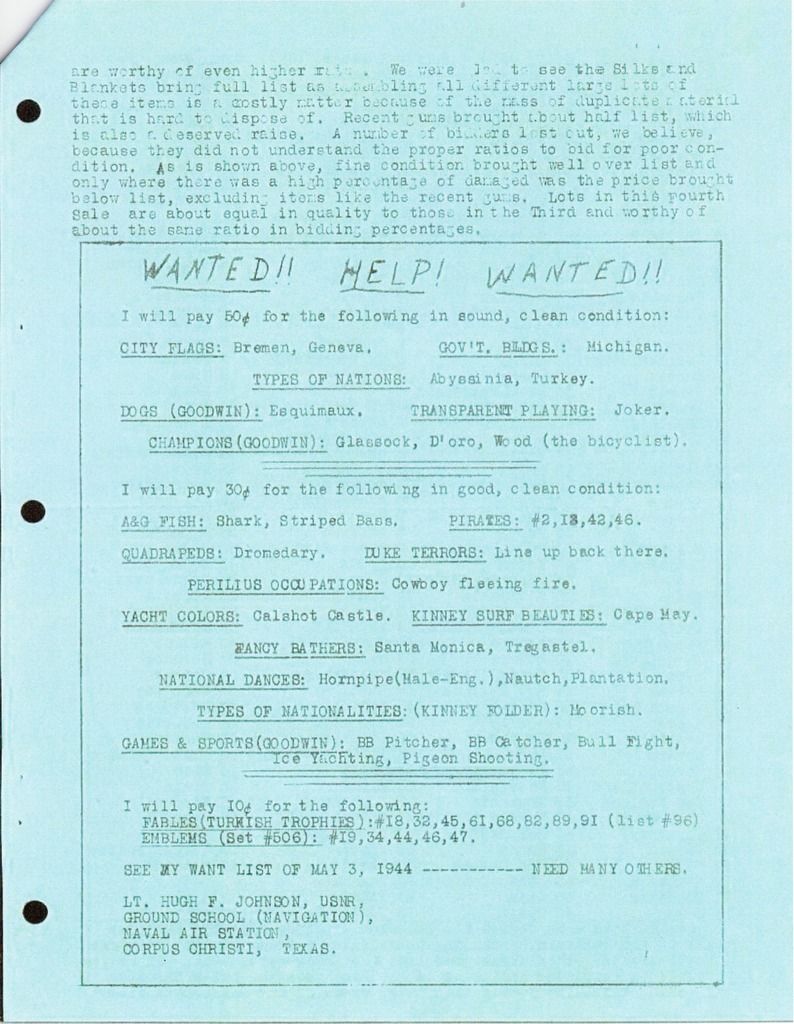
In the next issue of CCB (#33, December 1, 1944), Burdick wrote in his "News Notes" column about the results of sale #4, and about the size of lots in the auctions. He mentions that lot 20 (the 900 Old Judges) got surprisingly few bids, apparently because people were scared off by the $560 estimated value. The next two pages have the listings for Mail Sale #5, followed by some more comments by Burdick about the results of auction #4, and a complete list of prices realized from that auction. This shows that the lot of 900 Old Judges went for $300, or 3 for $1; in inflation-adjusted terms, that's $4,144, or about $4.50 a card, in today's dollars. Of the two big lots of T206s, the first one (#79) apparently got no bids, and the second one, #80 (447 different, 140 damaged), went for $9.00, well below the estimated value of $21.45. The T201s, however, went for more than the estimate, and the lot of 124 different T205s went for $4.75, close to the estimate of $4.96.
Of the lots in auction #5, there were more N301 Mayo die cuts; a lot of 48 different T3 Turkey Reds (then known as #514), 28 of them damaged; and near sets of T206 (518 different, 25 damaged) and T205 (207 different, 38 damaged), a complete set of T201s, and lots of T202s and T207s.
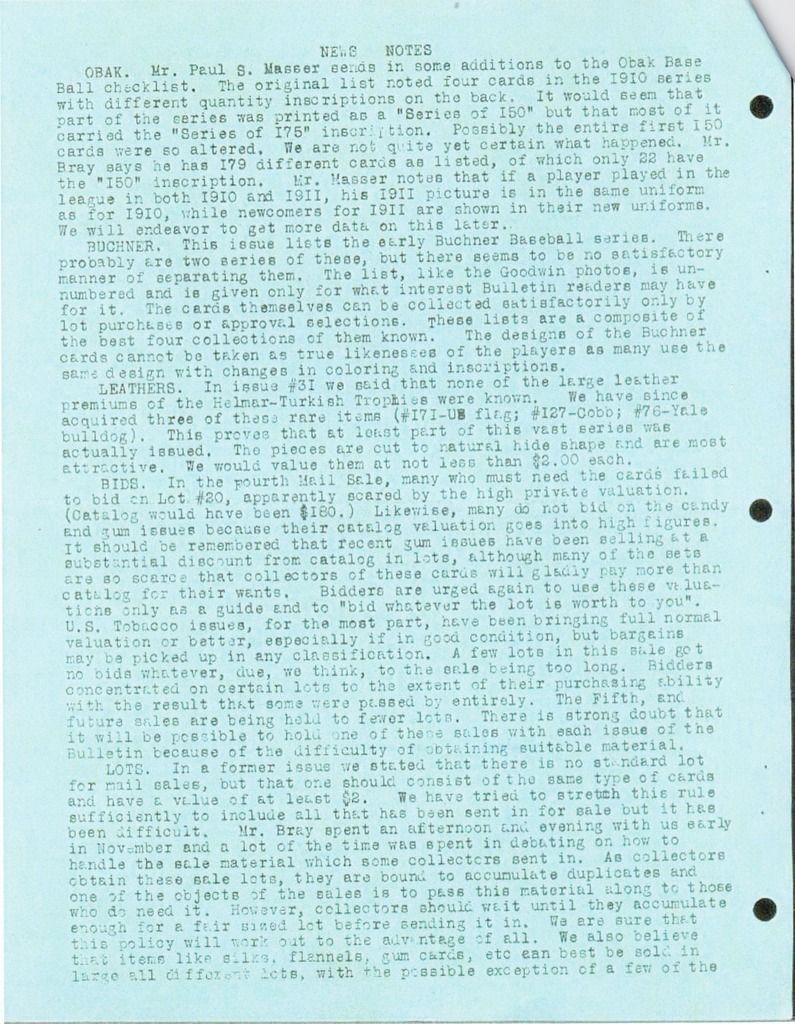
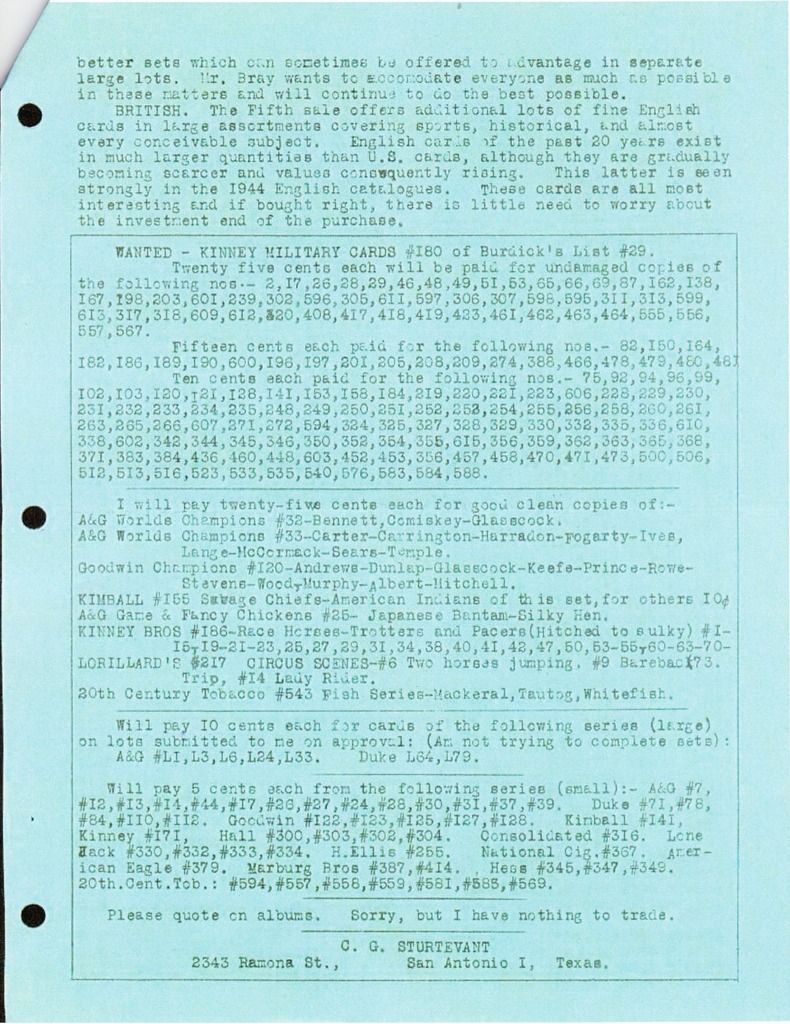
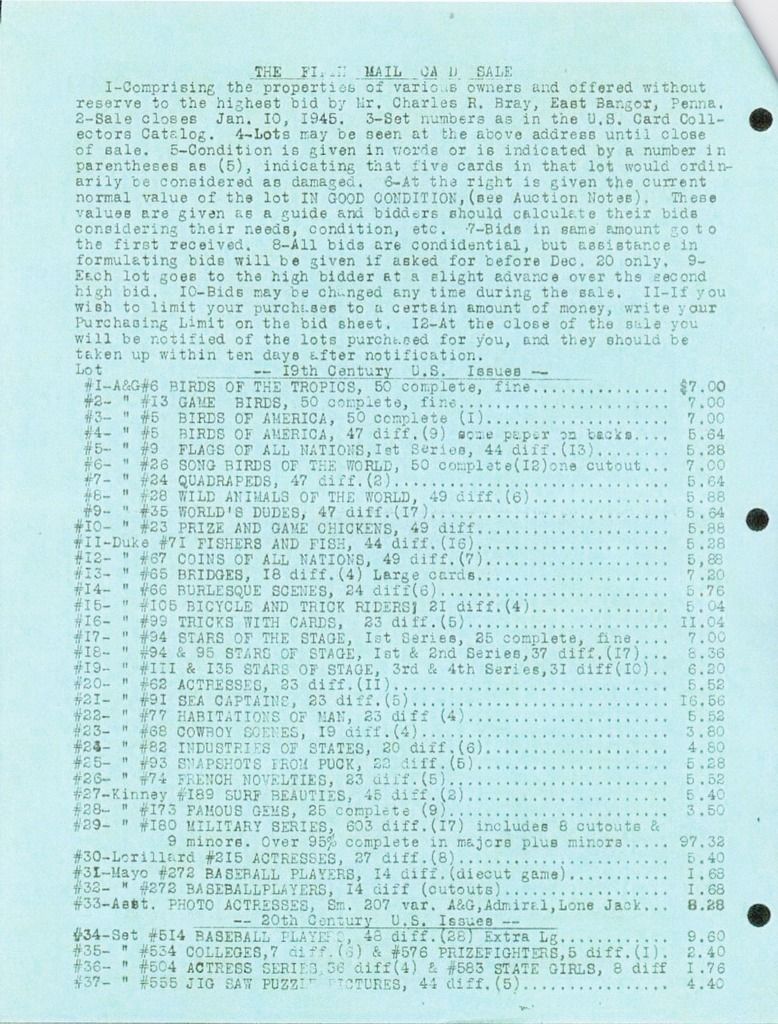


In CCB #34 (February 1, 1945), Burdick wrote a short article with tips on bidding (below), followed by the listings for Mail Sale #6 and the prices realized from #5. The near-set of T206s went for $20.75, about two-thirds of the estimate, but the other baseball sets went for more than their estimates: the T3s for $12.50, the near-set of T205s for $10.50, the set of T201s for $7.00, the T202s for $7.25, and the T207s for $11.25. The new auction, #6, included T205s, T207s, T201s, and T202s, but no more T206s or T3s.
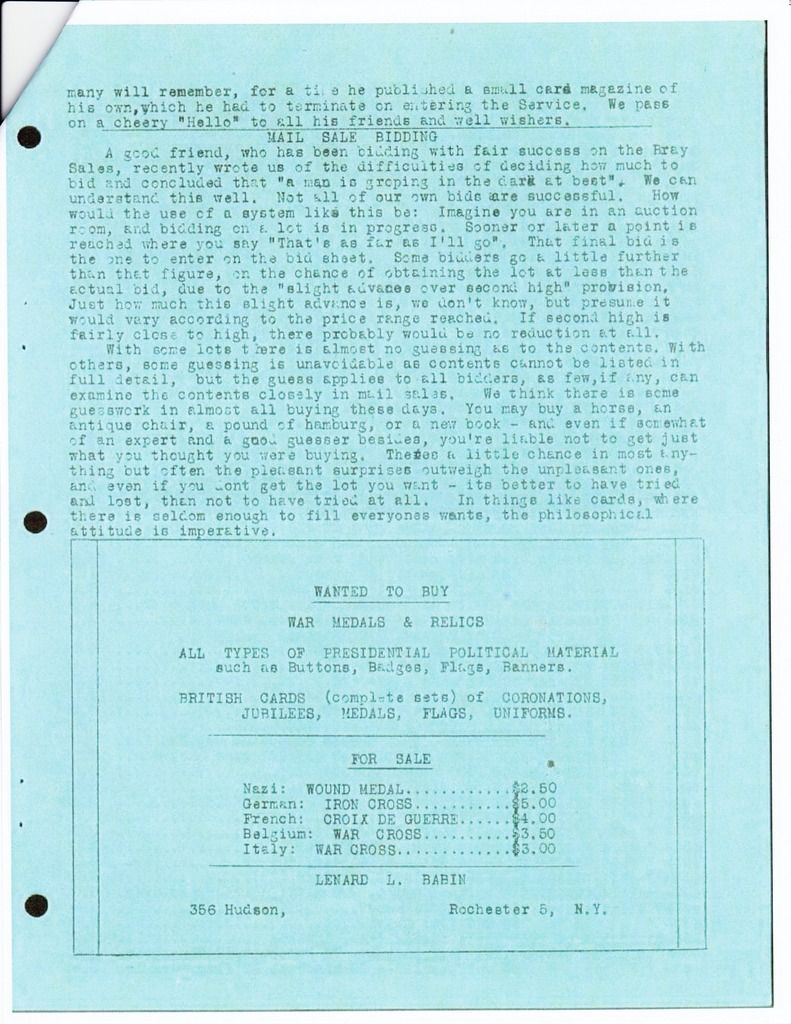

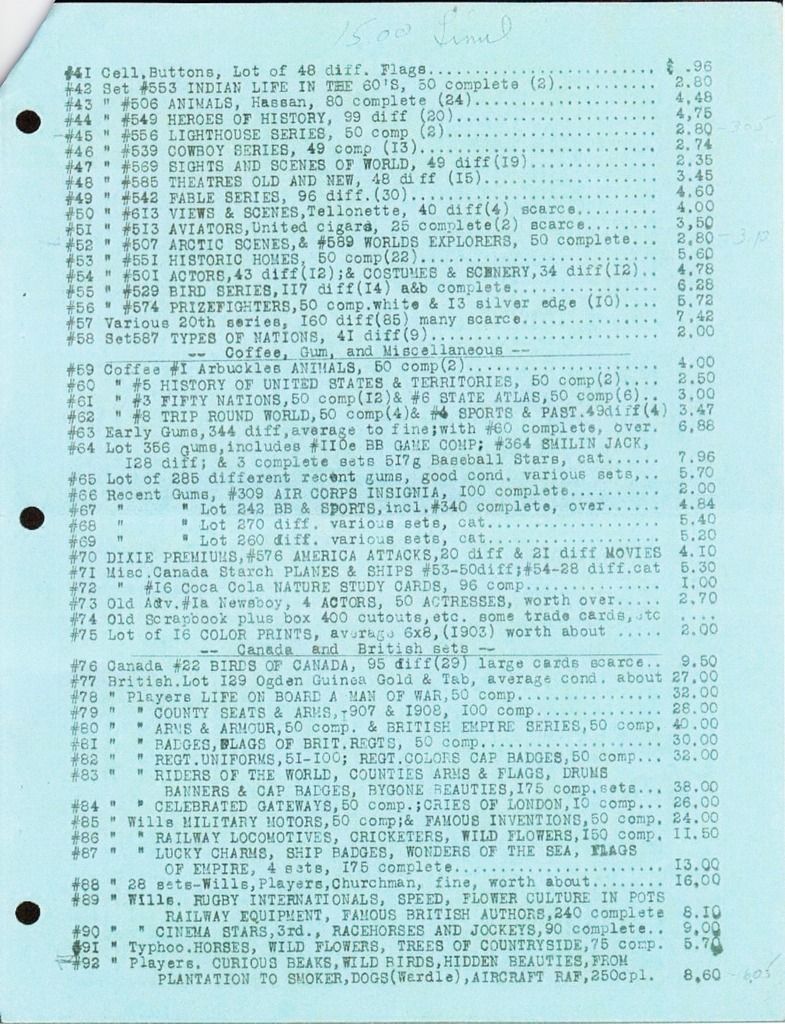
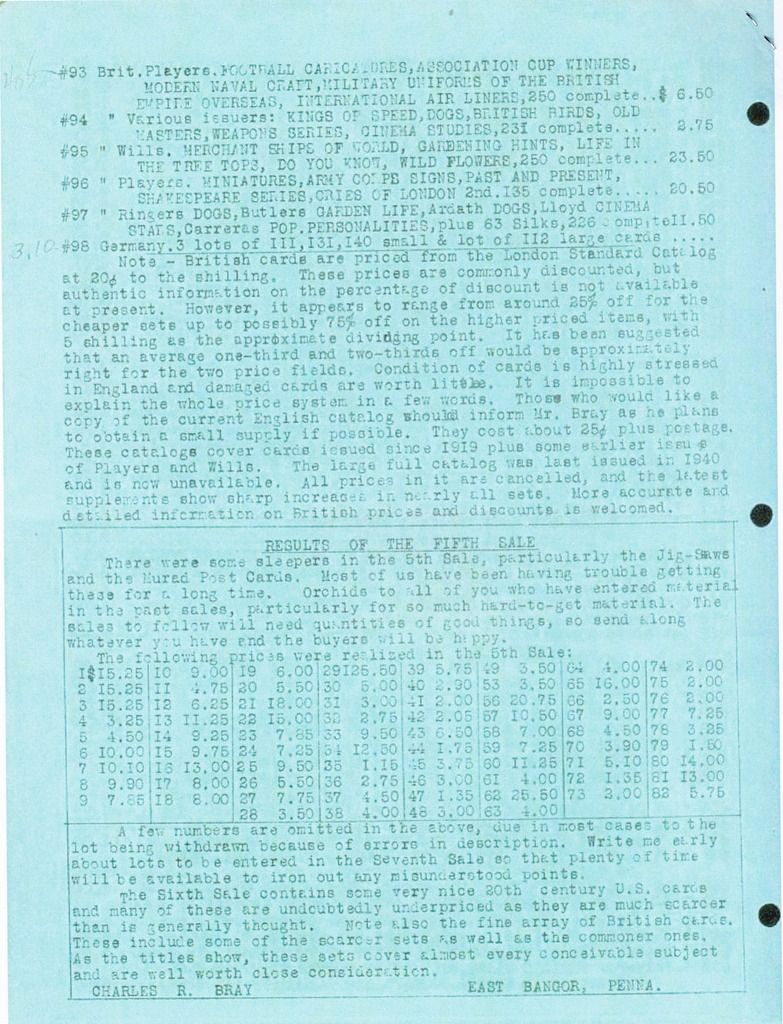
Unfortunately, the next issue of CCB (#35, April 1, 1945) did not have the prices realized from auction #6; they must have appeared in issue #36, which I don't have. (The next one I have is #40, which I've posted here.) It does have the listings for an abbreviated Mail Sale #7, with only 40 lots. I'll end this post with those listings, below. The only baseball cards in this one were two lots of T3s, plus lots of 44 different N28s and 35 different N29s that undoubtedly included some of the baseball players in those sets. If I ever get a hold of CCBs #36 through 39, I'll be able to see what those lots in auctions #6 and 7 went for.
